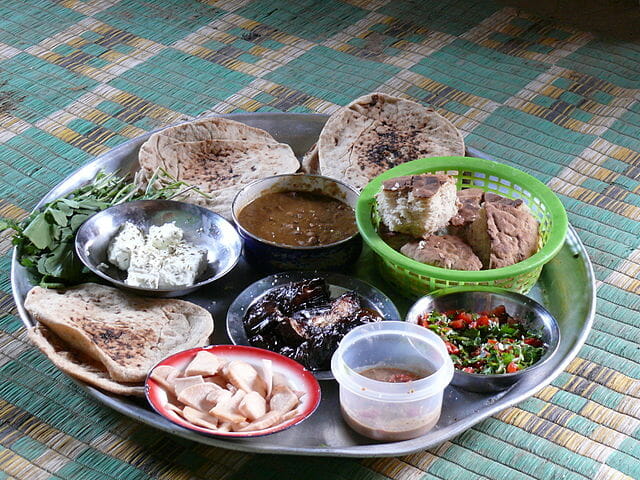Egyptian Food features a blend of African, Mediterranean, and Middle Eastern flavors and ingredients. That includes spices, herbs, and staples like rice, lentils, and fava beans. Popular dishes include Koshari, Ful Medames, Shawarma, Molokhia, Kebab, and Baba Ghanoush. Fresh fruits, vegetables, and seafood also play a large role in the country’s cuisine.
15 Egyptian Food to Try in Cairo:
-
Dolma
The image shows the grape leaves, one of the highly used ingredients in Egyptian cuisine. I mean, they use grape leaves to stuff rice, and vegetables to cook a dish called “Dolma”. It is one of the highly popular Egyptian Food .
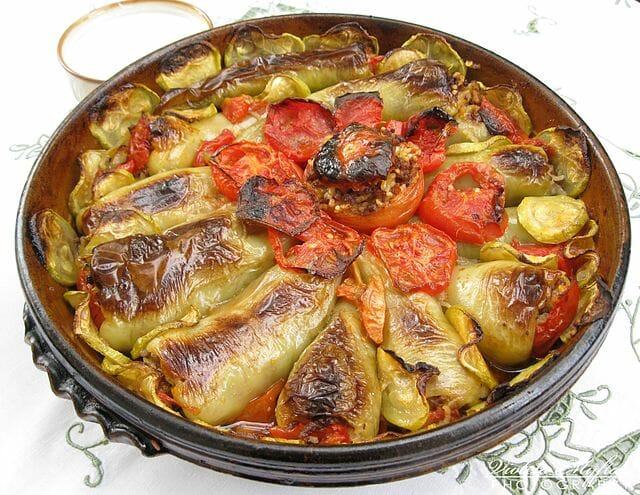
Dolma traces its origin back to Turkish cuisine. Dolma has variants in some parts of the world and is known as ‘sarma’.
Grape leaves or cabbage leaves are used to wrap the stuffed meats, vegetables, and/or fruits.
Rarely, fig leaves are also used to wrap Dolma.
Wow! This is truly a unique way of cooking in Egypt. I think the Egyptian Food lure connoisseurs from all parts of the world.
In this blog post, you will get an idea as to what to eat when you tour Egypt. Cairo, the capital of Egypt is one of the best holiday destinations in Africa.
As you know, Egypt’s culture and tradition are totally strange to the rest of the world. We all wonder what can we eat when we go to see the mysterious pyramids and exotic Egyptian temples.
Have the Egyptian Food embraced modern-day cuisines across the world? Can we find tastes of international cuisines that include Chinese, Mexican, Arabic, Spanish, and Portuguese?
Or, do the Egyptian still stick to their ancient culinary styles? The best way to find out is to know several dishes served in Cairo.
Cairo food, from what I found is definitely very new to the majority of the visitors. I suspect, even other African countries find it new but they accept the foods in Egypt that go easy on their palates.
-
Hummus
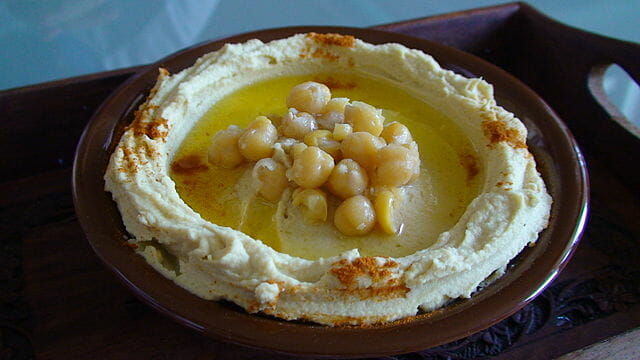
Hummus are not new to us. It is an Arabic dish that has managed to penetrate the kitchens in Egypt.
The floating solids you see in the above image of Hummus are ‘chickpeas’. The creamy liquid in which they float is called ‘Thahini’, made from sesame. As a Cairo food, sometimes, only the ‘tahini’ is served in bowl to eat it as such. I mean, you won’t find cooked chickpeas in it. Tahini has heavy garlic flavor. A tinge of tangy taste indicates the addition of lemon juice.
I think I would like it but without the pungent garlic. I cannot stand the smell of garlic.
As a dip, pita (a flat bread that is similar to ‘roti’) is eaten after dipping it in the hummus.
-
Meze
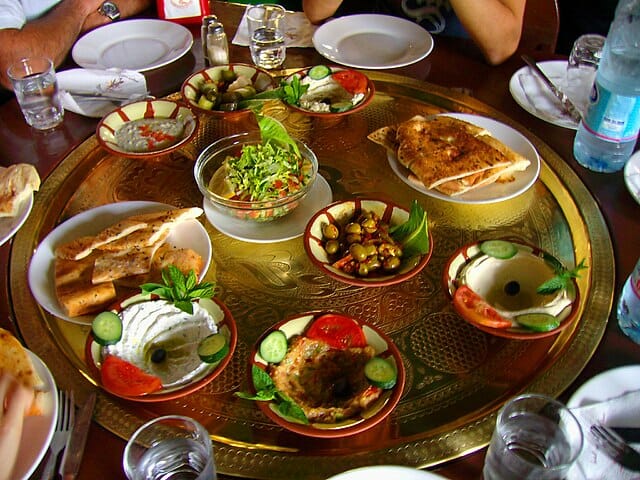
Look appetizing-right?
There are several small bowls containing myriad fries and salads that are meant as ‘starters’. Meze is served before the main course in high-end restaurants that are part of star hotels.
They are good as alcoholic accompaniments, especially the cheese cubes, and vegetable fritters.
-
Falafel
Some legumes such as broad beans or the ubiquitous chickpeas are ground into a semi paste and deep fried in oil.
As one of the foods in Egypt, the Falafels are eaten widely with a dip of chilli or tomato sauce.
As a modern custom, these ball-shaped snacks are put into pockets made of wheat flour. You can imagine the common roti is rolled into a cone and the falafel is put inside the roll, sprinkled with chopped onions.
Here is how the pocket made of a flour looks like.
The end product is again dipped in hummus or chilli sauce and taken. It is a popular Cairo food. This is considered as native food of Egypt.
-
Shawarma
I think by this time, this meaty evening snack has entered into all parts of Asia.
This is how it looks before serving. It is an innovative form of cooking wherein shreds of chicken meat are somehow rolled over a spindle.
The roll then revolves on the spindle which is surrounded by flame that cooks the raw and spice-marinated meat.
It is served as shredded meat with vegetables and topped up by a sauce. The whole thing is given to you in a flour bag as mentioned in the previous dish.
Shawarma is an exclusive street food and is also one of the widely eaten foods in Egypt.
-
Ful Medames
A vegetarian stew containing fava beans that is sold all over the Egypt. This Cairo food is appetizingly garnished with finely chopped green chillies and parsley and black pepper powder.
A piece of lemon is given in the plate. If you want a sour or tangy taste, squeeze it over the stew, blend well and scoop it with a soup scoop.
Do you know that the Ful Medames is eaten by all and is also a national dish of Egypt. I think it is a healthy breakfast item because of the protein rich fava beans.
-
Mulukhiya
The black liquid you see above is Mulukhiya. It is served with a big chunk of chicken and boiled rice.
The basic material that is used to make the ‘mulukhiya’ is something unheard of. The leaves of a plant called ‘jute mallow’ are used. Alternatively, it is known as ‘nalta jute’.
Yes, jute fiber is made from this plant but the leaves and even the fruits of ‘nalta jute’ are edible.
Surprisingly, this Cairo food is not a recent day find but it dates back to the 14 th century itself!
Since it is a pasty liquid, sometimes, Mulukhiya is eaten as a soup in which cooked shrimps are floating.
Other meats used to serve along with rice and Mulukhiya are lamb, rabbit, and even fish. Please note that the Mulukhiya is heavily garlicked.
I already mentioned Ful Medames as a a national dish of Egypt. The Mulukhiya is also a national dish for the Egyptians.
Therefore, don’t forget to eat it as one of rhe foods in Egypt.
-
Lamb Kofta
I have eaten malai kofta in India. It is a vegetarian dish that is served during the main course along with the Indian roti.
In Egypt and in the Middle-East coubtries, kofta is a ball shaped dish made with either mutton or chicken, or beef.
Koftas are very popular in Arabian countries, Iran, Turkey, and India also.
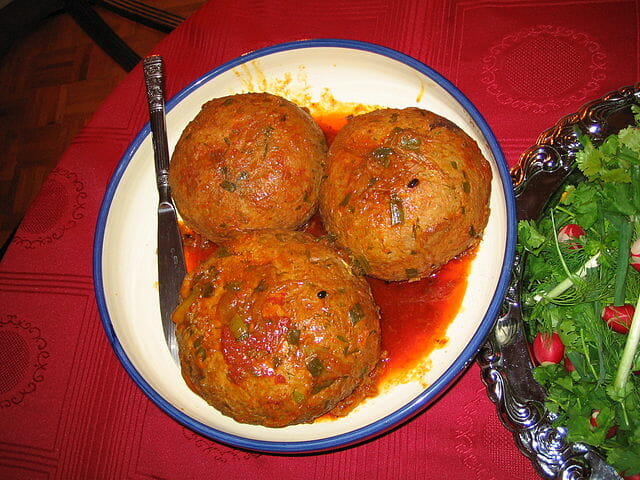
These meat balls (koftas) are elaborately cooked with several ingredients and then placed in a gravy made with tomato, onion, garlic, bay leaves, and cashew nuts.
-
Koshary
It is nicely presented-eh? Not only that but it tastes very delicious and quite filling.
Though Koshary is a street food in Cairo, it is one of te Egyptian national dishes. The ingredients of Koshary include:
- Pasta
- Spaghetti
- Rice
- Lentils
- Vegetables
- Chickpeas
- Vinegar
Did you notice the absence of any meat? Yes, this one of the rare vegetarian foods in Egypt.
-
Pita
If you are not eating any stews or kebabs, you will be eating ‘pita’, a kind of flatbread that is similar to the ‘chappati’ of India and Pakistan.
Pita is never eaten as such; it is always accompanied by either a gravy or dry dish.
In the restaurants’ menu cards, if you find the name ‘Eish Baladi’, know it to be a flatbread and it is a staple.
Bataw is another avatar of pita in Eygptian villages.
-
Offal
A plate full of different organs of an animal or fish! It must be an expensive Cairo food.
-
Foie Gras
This is not a street food as it is expensive and served only in select restaurants in Cairo. Mallard Duck is the main ingredient of this food in Egypt.
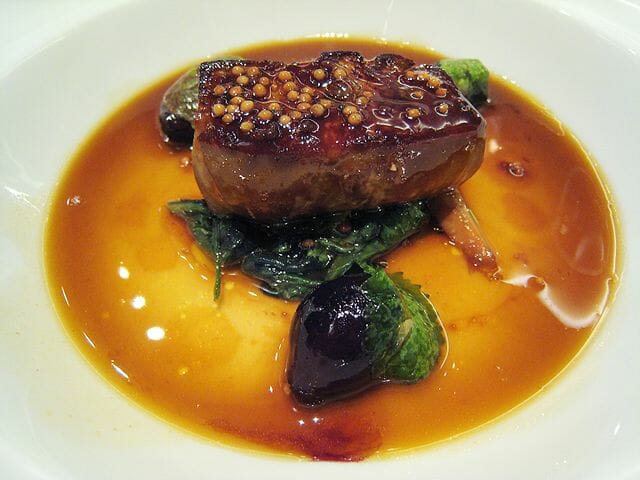
When you see this as one of the ingredients in the menu cards of Cairo restaurants, know it to be a local cheese.
Another cheese in Egypt known as ‘rumi’, is processed with salt.
-
Feteer
It is a savory and a snack dish in Egypt. Feteer is flaky and layered, that tastes similar to the ‘puff’ you find in India, Afghanistan, Singapore, and Sri Lanka.
It is eaten with some stew or a hot sauce. In some places, you will find stuffed feteers. The stuffing will be invariably, onlion slices or grated coconut.
-
Basbousa
While roaming the streets in Cairo in the late evening, you will find numerous food kiosks. The aroma will pull you towards the stalls. I hope this short guide about foods in Egypt will come in handy.


